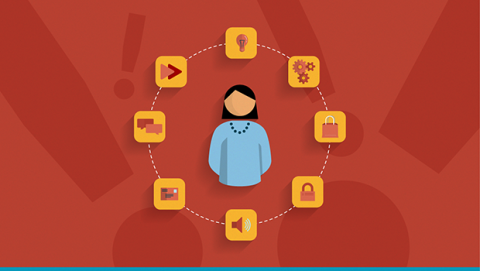As more and more things get smart – from thermostats and toothbrushes to utility grids and industrial machines – data is being created nearly everywhere, making it increasingly urgent for IT leaders to determine how and where that data will be processed.
Enter the edge. There are perhaps as many ways to define edge computing as there are ways to apply it. At its core, edge computing is the practice of processing data close to where it is generated.
[ What is edge? For a more detailed explanation, see How to explain edge computing in plain English.]
What is undisputed, however, is the increasing role edge computing will play in the IT organization as more things out in the world are digitized. “Any CIO or IT team involved in their organization’s digital transformation efforts must start now to prepare for a major increase in deployment of IT assets and creation, use, and analysis of data assets edge locations,” says Richard Villars, vice president, data center and cloud, at IDC.
The benefits of edge architecture are relatively clear. By locating more data processing closer to where its created, edge computing can reduce latency and enable near real-time analytics. It cuts the costs associated with remote applications. It can be used to enhance customer experiences, improve operations, and enable better or faster decision-making.
“The ability to position intelligence closer to users and devices represents a huge opportunity to impact business outcomes,” says Stephen Blum, CTO and co-founder at PubNub. “Think indoor geolocation services, smart retail, location-based marketing and analytics, home automation – all transformed by edge computing [and] the ability to provision, manage, and centrally update the vast number of devices in the field.”
As CIOs begin to explore edge architecture options and use cases, here are some important considerations to keep in mind:
1. The right framework is essential
Edge computing promises faster user experiences, greater uptime, and lower costs for operation – if well architected. “Choosing the right serverless frameworks and technologies is key,” Blum says. There are numerous hosted vendors and open source options touting themselves as “serverless,” but not all are created equal. Knowing your specific use cases and how they match up with the vendors’ optimal use cases should guide decision making, says Blum.
2. Cybersecurity risks increase
This is one of the drawbacks to edge computing, according to Dr. James Stanger, chief technology evangelist at CompTIA. “Increasing the number of devices collecting data and the number of locations where data processing takes places also increases the potential for cyberattacks at these devices.”
What’s more, adds Villars, companies that want to fully embrace the innovation at the edge should be ready to accommodate the edge deployment of infrastructure, applications, and data owned by third-party providers. “This poses a whole new level of challenges when it comes to network and physical asset security,” Villars says.
3. There are no databases or data layers at the edge (yet)
Therefore, any lookups will add latency, warns Blum. And IT will need to take extra steps to enable data replication.
4. Costs can be hard to nail down
“Often network costs are wrongly sized and underestimated,” says Holger Mueller, vice president and principal analyst at Constellation Research. “It’s often critical computing for an enterprise, so it is crucial to get that right.”
[ How are media companies using edge computing? Watch the MWC panel discussion: Tips and tricks for 5G and the network edge. ]
5. Ongoing support and maintenance requirements will be significant
Edge IT environments must have high availability and continuous operation despite network degradation and failure. They must deliver frictionless and dynamic delivery of network connectivity and network security; advanced compute capabilities that support extreme low latency and real-time analytics; and smart storage that meets requirements for local data placement and data governance, says Villars. “More importantly,” he adds, “the deployment and ongoing maintenance of all edge IT assets must be centrally controlled and automated so organizations can manage fleets of tens, hundreds, or even thousands of IT assets in locations around the country or the globe.”
6. Bigger can be better
“Edge computing plans and architectures must be developed with operationalizing the entire enterprise in mind,” says Jason Mann, vice president of IoT at SAS. “Proof of concept (POC) models rarely work.” The good news, though, is IT organizations do not need to start at square one. “Capabilities are in place now and ecosystems are already formed to accelerate your efforts,” Mann says.
[ Want to learn more about implementing edge computing? Read the blog: How to implement edge infrastructure in a maintainable and scalable way. ]







